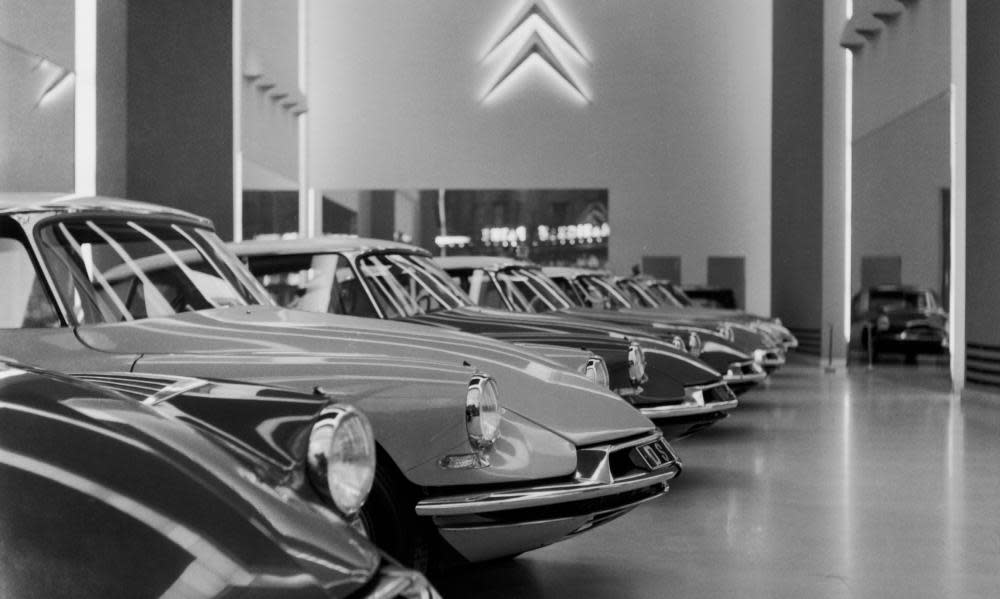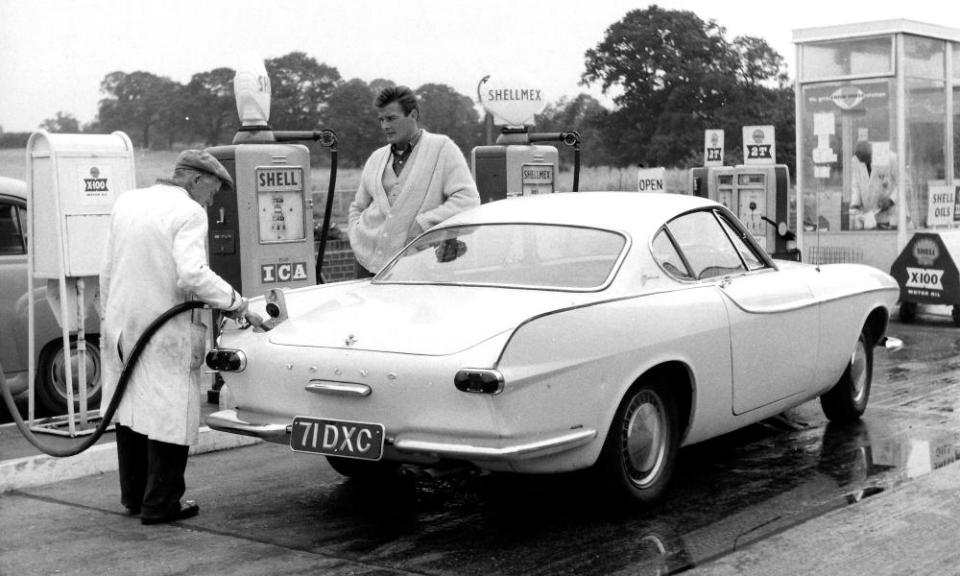Cars from the continent: the direction of travel in 1960 – from the archive

Cars from the continent
by Michael Brown
27 June 1960
The two most strongly evident characteristics of the Continental car are almost antipathetic: they are pronounced national character and unorthodoxy – the former an ally of tradition, and the latter its enemy.
One needs to be careful about this. Frequent visits abroad lead to the mind’s associating Citroëns and Renaults with France, Volkswagen with Germany, and Fiats with the Italian scene, but that is not the same as discovering marked national characteristics in a car. The test comes in say, Spain, where an old, boldly chevroned Citroën or an ancient Peugeot seem irrepressibly French. If Spain’s own car, the Pegaso, produced by ENASA at Barcelona, is ever seen on the roads of its motherland, the English visitor is rarely there to see it. Yet the Pegaso is utterly typical of Spain and the Spanish. Perhaps this is no more than arguing that man (and all that he produces) is inevitably a product of his environment. But with cars this hardly seems axiomatic. It is difficult to see, for instance, why the cars of Frank Lloyd Wright’s country should be the most “jazzed-up” in the world. But whatever forms national characteristics take in the motor Industry, cars are fiercely nationalistic, and it will be interesting to see if they become any less so under the influence of the Common Market.
Motor-car nationalism is not by any means solely a matter of aesthetics. We expect an Alfa Romeo to have a Mediterranean perfection about its proportions, just as we accept the look of a country bistro that hangs about the 2CV Citroën. What is more surprising is the close influence of the country of origin on mechanical design.
A Lancia, a Fiat, or an Alfa Romeo have always seemed to possess a delicate refinement allied to toughness of fibre. On occasions they have been superlative – the Lancia Aprilia, the Mille Miglia Alfa, the Fiat 500, say. Is this not the Italy of da Vinci, of Garibaldi, of Verdi’s Falstaff? These were cars perfectly adapted to, and springing from, a great reservoir of culture, a hot, dramatic climate, and a political environment that produced a rich minority. Only incidentally does the physical character of Italy influence the design, as if the car was built to suit a city man save for the occasional spectacular journey. Such is, very largely, Italian life.
By contrast the Frenchman is a traveller. His country demands it being empty and spacious. His architecture is unique, his domestic surroundings often tasteless, and his small towns initially discouraging. Yet the country and its people exercise a fascination on the rest of Europe that makes strangers return again and again until France is, indeed, the second homeland of the man of culture. Nothing more adequately delineates the Citroën, of all French cars the most French. It has always been a machine to devour miles at high speeds and with great safety; it has always been unique in appearance, sometimes unattractive within, even initially repellent. Lived with for any length of time, a Citroën enslaves its owner and, for anyone who can escape the entanglements of aesthetic tradition, it is as unerringly advanced as Le Corbusier. So closely does the parallel run, in fact, that at a time when, by her rebuilding after the war, France was earning admiration for urban domestic architecture. Citroën was, producing in the DS and ID models cars which, while unique in the Citroën fashion, were also at once attractive to non-French eyes.

Similar parallels between German cars – Mercedes-Benz, Volkswagen, Borgward, BMW – and the national character can be drawn with equal facility. The Volvo is unmistakably Scandinavian, the DAF could hardly be other than Dutch. The Pegaso is as fierce as a Castilian bull, as exciting as a flamenco dancer, as exaggerated as an Andalusian landscape – perfectly mirroring Spanish extremes.
But why, then, the unorthodoxy? Fiat calmly placed a rear engine transversely across the chassis in 1956. Alfa Romeo introduced five-speed gear boxes when other designers were maintaining that a car could not run indefinitely to an indirect ratio. The originality of the Volkswagen (flat-four engine, air-cooling rear mounting, all-round independent suspension) needs no further emphasis than worldwide sales have given it. Mercedes introduced petrol injection (1955) and the DAF is belt-driven. Pegaso (1953) used the V-eight layout for a comparatively small engine (2.5 litres).
Related: The Volkswagen story, by general director Nordhoff: From the archive, 27 June 1960
Citroën has been so consistently unorthodox since 1934 that its unorthodoxy is almost orthodox. Front-wheel drive, integral construction, off-the-floor gear levers, disc braking, pneumatic suspension – all these have come from St Ouen. The 2CV possessed practically nothing that was conventional in automobile engineering. Renault shared unorthodoxy with the rear-engined 4CV, and Panhard with the light alloy constructed Dyna, from which the two-cylinder engine could be wheeled away after the briefest preliminaries of front-end disengagement.
It is less easy to reconcile this with Continental tradition, although it becomes easier upon investigation. Continental Europe has been, after all, a great innovator in spite of its long cultural history. It embraced republicanism early and discarded the titles and trappings of social distinction; it electrified railways and built motor roads. The Impressionists were French; Picasso is a Spaniard. The Germans pioneered rocketry, however far astray the rockets are going to-day. Italy, with a sunny effrontery, is turning the drab British male into a peacock. In mass, most of these nations are at present combining in the innovation of a united Europe. The depth of tradition does not stay the turbulence of the surface.
It is never wise to discount even trivial environmental factors. A wine-drinking race is more likely to engage in flights of fancy, particularly under a hot sun, than are reserved Northerners drinking beer in a fog. In automobile design, the flight may ultimately mean a Porsche, or a de Dion rear end and a top speed of 150 mph – poetry on the drawing-board, as it were. André Citroën is supposed to have conceived the 2CV as the direct mechanical equivalent of the mule: sure of foot, gentle of gait, tolerant of burden. Did he? It would be nicer to think that he had dined well after the years of wartime privation and that in an inspired moment he had demolished the nostalgic pinings of his companions for pre-war voitures by sketching, no doubt, badly, the fundamentals of the 2CV on the back of the menu – and then, being a man of courage, had gone ahead and made it. That would be as logical and as French as his reputed estimate of what le paysan needed.

Cross-Channel car commerce
27 June 1960
Last year about 26,000 Continental cars came into the United Kingdom, valued at approximately £10 millions. They came principally from France, Western Germany, Italy and Sweden. In the same year new registrations of cars in Britain totalled 645,617. Continental cars imported into this country, therefore, represented just under 4 per cent of all cars put on British roads last year – allowing for the smaller number imported from other countries.
Related: No-deal Brexit will have 'seismic' impact, says European car industry
The figure of 4 per cent of new registrations last year shows a marked increase over the decade. In 1950 only some 1,300 Continental cars were imported and these, out of registrations totalling 132,273, amounted to only 1 per cent.
But the car exports to Europe last year numbered 108,189 units, valued at £38,773,255. This amounted to 9.1 per cent of our total car production. In 1951 we exported 71,278 cars (or 15 per cent of total production). Total car exports to all countries for 1959 totalled 568,846 units valued at £222,535,133. In 1951 the figures were 368,101 cars worth £118,802,042. Expressed as a percentage of our total production, these world export figures represent 47.8 per cent for 1959 and 77.3 per cent for 1951. They compare with pre-war figures of 66,257 cars exported in 1938 valued at £7,274,330.

In 1930 motor-car imports from France, Germany, and Italy amounted to 1,880 (only one car was imported from Sweden in that year). Those imports represented 1.2 per cent of new cars put on British roads. For 1938 the total number of cars imported from these countries was 5,660, or about 2 per cent of registrations.
The most interesting trend noticeable in these import figures when the periods before and after the war are compared is that before the war German cars easily led the others, whereas since the war leadership has passed to the French. Last year France sent 14,412 cars to the United Kingdom, Western Germany 8,223, Italy 3,042, and Sweden 458.
The general rate of import duty on foreign cars brought into this country was reduced to 30 per cent in 1956, at which rate it has remained. Last November imports of Continental cars to the United Kingdom were liberalised by the ending of the quota system, and at the same time quota restrictions on British cars to the Continent were lifted (except for Italy, which still works on the quota system for our exports of cars).


